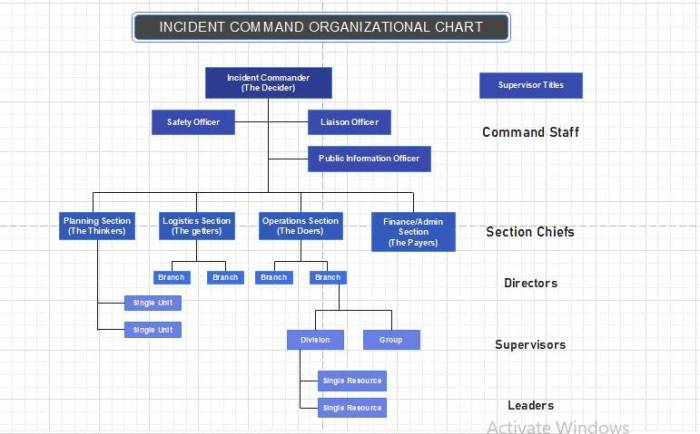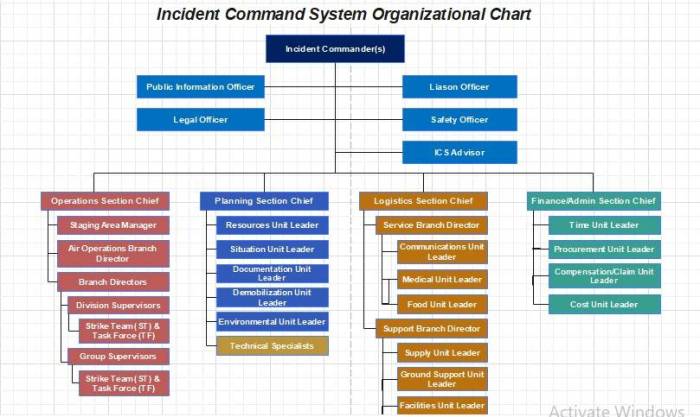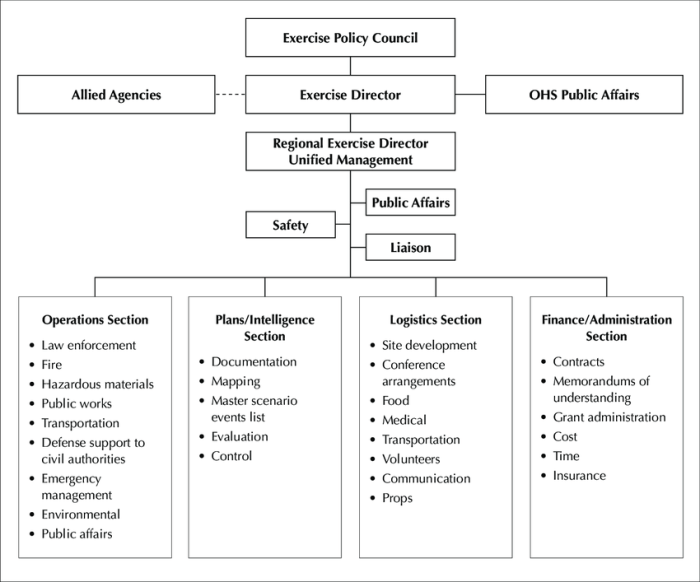The top-down modular ICS organizational structure is based on the concept of dividing an organization into smaller, more manageable units. This structure is often used in large organizations with complex operations, as it allows for greater efficiency and coordination. The top-down modular ICS structure has a number of advantages, including improved communication, increased accountability, and reduced duplication of effort.
However, it also has some drawbacks, such as the potential for bottlenecks and a lack of flexibility.
In this article, we will explore the top-down modular ICS organizational structure in detail. We will discuss its key principles and characteristics, as well as its benefits and drawbacks. We will also provide tips for successful implementation and discuss some real-world examples of organizations that have successfully used this structure.
Understanding the Top-Down Modular ICS Organizational Structure: The Top-down Modular Ics Organizational Structure Is Based On The

The top-down modular ICS (Incident Command System) organizational structure is a hierarchical structure in which authority and responsibility flow from the top down. It is characterized by a clear chain of command, with each level of the organization reporting to the level above it.
The top-down modular ICS structure is often used in large, complex organizations, such as government agencies, military organizations, and corporations.
The key principles of the top-down modular ICS structure are:
- Unity of command:Each individual reports to only one supervisor.
- Span of control:The number of individuals reporting to a single supervisor is limited.
- Delegation of authority:Authority is delegated from the top of the organization to lower levels.
- Standardization:Processes and procedures are standardized throughout the organization.
Benefits and Drawbacks of the Top-Down Modular ICS Structure, The top-down modular ics organizational structure is based on the
The top-down modular ICS structure offers a number of benefits, including:
- Clear chain of command:The clear chain of command makes it easy to identify who is responsible for making decisions and taking action.
- Efficient communication:The hierarchical structure facilitates efficient communication between different levels of the organization.
- Standardized processes:The standardized processes and procedures help to ensure that tasks are completed consistently and efficiently.
- Reduced risk of errors:The clear chain of command and standardized processes help to reduce the risk of errors.
However, the top-down modular ICS structure also has some drawbacks, including:
- Slow decision-making:The hierarchical structure can slow down decision-making, as decisions must be made at the top of the organization and then cascaded down.
- Limited flexibility:The standardized processes and procedures can make it difficult for the organization to adapt to changing circumstances.
- Lack of employee empowerment:The top-down structure can limit employee empowerment, as employees may feel that they have little say in decision-making.
Implementation and Considerations
Implementing a top-down modular ICS structure requires careful planning and execution. The following steps are involved in implementing a top-down modular ICS structure:
- Define the organizational structure:The first step is to define the organizational structure, including the chain of command and the span of control.
- Develop standard operating procedures:The next step is to develop standard operating procedures for all key processes and tasks.
- Train employees:Employees must be trained on the new organizational structure and standard operating procedures.
- Implement the structure:The final step is to implement the new organizational structure.
- The size of the organization:The top-down modular ICS structure is most effective in large, complex organizations.
- The nature of the organization’s work:The top-down modular ICS structure is best suited for organizations that perform standardized tasks.
- The culture of the organization:The top-down modular ICS structure can be difficult to implement in organizations with a strong culture of employee empowerment.
- Division of the organization into smaller, more manageable units
- Clear lines of authority and responsibility
- Centralized decision-making
- Standardized processes and procedures
- Improved communication
- Increased accountability
- Reduced duplication of effort
- Improved efficiency and coordination
- Potential for bottlenecks
- Lack of flexibility
- Can be bureaucratic and slow to respond to change
When implementing a top-down modular ICS structure, it is important to consider the following factors:
FAQ Section
What are the key principles of the top-down modular ICS organizational structure?
The key principles of the top-down modular ICS organizational structure include:
What are the benefits of the top-down modular ICS organizational structure?
The benefits of the top-down modular ICS organizational structure include:
What are the drawbacks of the top-down modular ICS organizational structure?
The drawbacks of the top-down modular ICS organizational structure include:


